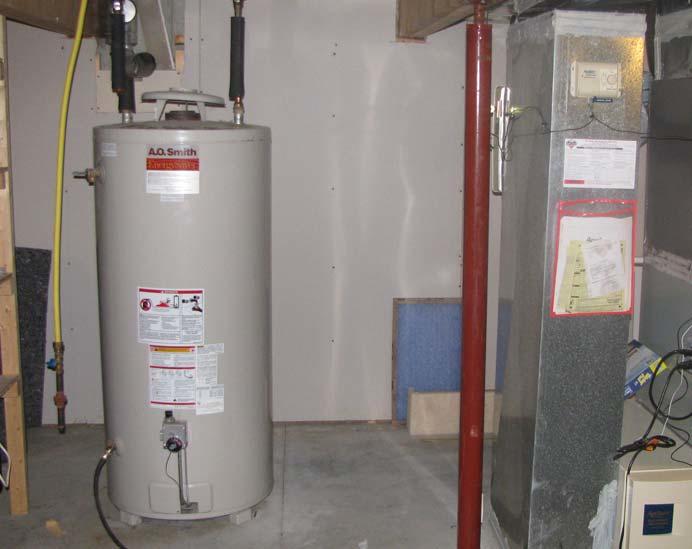How to Care for Your Home's Hot Water System Properly
ServicesThey are making a number of great pointers about Tips For Maintaining Your Hot Water Heater as a whole in the article beneath.

Warm water is important for day-to-day comfort, whether it's for a rejuvenating shower or cleaning meals. To ensure your hot water system runs successfully and lasts longer, routine upkeep is essential. This write-up offers sensible suggestions and understandings on just how to maintain your home's hot water system to stay clear of disruptions and pricey repairs.
Introduction
Keeping your home's warm water system could seem difficult, yet with a few basic actions, you can ensure it operates smoothly for many years to find. This guide covers every little thing from recognizing your hot water system to DIY maintenance ideas and recognizing when to call in expert assistance.
Significance of Keeping Your Warm Water System
Routine maintenance not only expands the life expectancy of your warm water system however likewise ensures it runs successfully. Neglecting maintenance can lead to decreased performance, greater power costs, and also premature failure of the system.
Indicators Your Warm Water System Requirements Maintenance
Understanding when your warm water system requires interest can stop significant problems. Keep an eye out for indicators such as irregular water temperature level, weird sounds from the heating system, or rusty water.
Purging the Hot Water Heater
Purging your hot water heater removes sediment build-up, boosting efficiency and prolonging its life.
Monitoring and Changing Anode Rods
Anode poles stop rust inside the storage tank. Examining and changing them when worn is important.
Complicated Issues Requiring Specialist Assistance
Examples include major leaks, electric issues, or if your water heater is consistently underperforming.
Regular Specialist Upkeep Perks
Professional upkeep can consist of extensive evaluations, tune-ups, and ensuring conformity with safety standards.
Evaluating and Changing Temperature Setups
Changing the temperature setups ensures optimum performance and safety.
Do It Yourself Tips for Maintenance
You can execute a number of maintenance jobs on your own to keep your warm water system in top problem.
Checking for Leakages
On a regular basis examine pipes and links for leaks, as these can bring about water damage and greater bills.
Recognizing Your Hot Water System
Prior to diving into maintenance jobs, it's handy to understand the fundamental parts of your hot water system. Typically, this includes the hot water heater itself, pipelines, anode poles, and temperature level controls.
Regular Monthly Maintenance Tasks
Normal regular monthly checks can assist catch small problems prior to they intensify.
Evaluating Pressure Alleviation Valves
Checking the stress safety valve guarantees it functions correctly and protects against extreme stress accumulation.
Insulating Pipelines
Protecting hot water pipelines minimizes warm loss and can conserve power.
When to Call a Specialist
While do it yourself upkeep is valuable, some issues need professional expertise.
Final thought
Regular maintenance of your home's warm water system is essential for efficiency, longevity, and price financial savings. By adhering to these ideas and recognizing when to look for specialist aid, you can guarantee a reliable supply of hot water without unanticipated disruptions.
Water Heater Maintenance Tips
Test the TPR Valve
Shut off the power and the cold-water supply valve. Place a bucket under the pipe connected to the temperature-pressure-release (TPR) valve on the top or side of the tank. (This valve opens if the tank pressure gets too high.) Lift the valve’s tab to let some water out, then let go. If water keeps flowing, drain the tank partway, unscrew the old valve with a pipe wrench, and install a new one. Check the Anode Rod
Put a hose to the tank’s drain cock and let out a few gallons of water. Now fit a 1 1/16-inch socket onto the rod’s hex head on top of the heater (or under its top plate) and unscrew the rod. If it’s less than ½ inch thick or coated with calcium, buy a new one, wrap its threads with Teflon tape, put it back in the tank, and tighten securely. Use this segmented rod if headroom above the tank is limited. Drain the Tank and Wash Out Sediment
Drain the remaining water in the tank into the bucket, then stir up the sediment on the tank’s bottom by briefly opening the cold-water supply valve. Drain and repeat until clean water comes out of the hose. Close the drain cock, refill the tank, and turn its power back on. Adjust the Temperature
Find the temperature dial on the side of the tank and unscrew its cover. Adjust the dial to 120 degrees using a flathead screwdriver. For every 10 degrees the temperature is lowered, you can expect to save up to 5 percent in energy costs. Turn the water heater off or the thermostat down to its lowest setting if you plan to be away from home for more than three days. Insulate the Pipes
Buy some self-sticking 3/8-inch-thick foam pipe insulation that matches the pipes’ diameter. Slide the foam over the hot-and cold-water pipes as far as you can reach. Insulating the cold-water pipe prevents condensation in summer. Peel the tape and squeeze the insulation closed. If the pipe is 6 inches or less from the flue, cover it with 1-inch-thick unfaced fiberglass pipe wrap. https://www.thisoldhouse.com/plumbing/21016402/how-to-maintain-a-water-heater

I came across that entry about How to Maintain a Hot Water Heater in a Few Simple Steps while doing a lookup on the internet. So long as you appreciated our blog entry kindly consider to share it. Many thanks for being here. Kindly visit our blog back soon.
Click Here